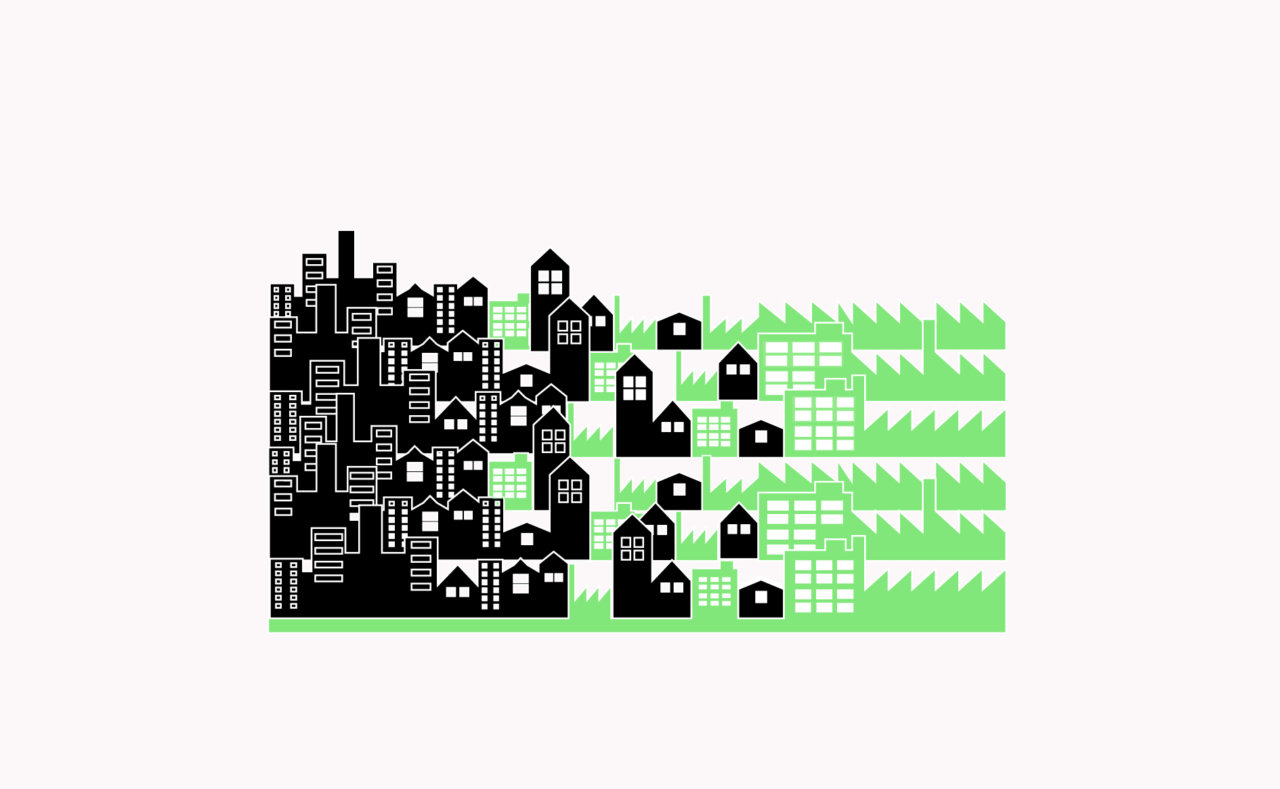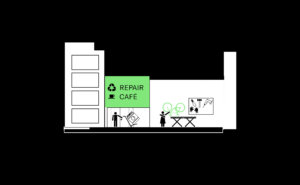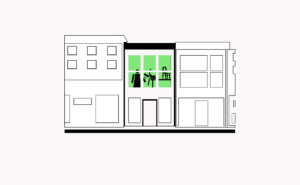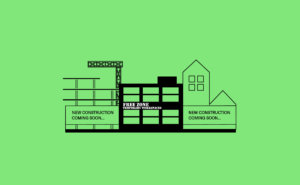
C.10 Transition Zones
Zones adjoining industrial areas can provide ideal space for small to medium size manufacturing businesses and supporting services that help transition into mixed use and residential areas.
[Context] In ecology, transition zones contain the richest variety and greatest interaction between species. The transition zone between manufacturing and other land can be much the same with a high diversity of activities such as residential, hotels, banks and financial agencies, designers and engineers, restaurants, material suppliers, small artisan workshops, mechanics and P.6 Re-use & Repair Centres, health clinics and so forth. This zone can offer the R.4 Availability of Diverse Jobs supporting manufacturing. Transitions can occur at the scale of a neighbourhood, block, street or building and will depend on the predominant activity in the industrial area.
[Problem] Over the last decades, many manufacturing businesses left European cities, leaving blight and voids. Affected neighbourhoods have regenerated without suitable strategies to have both good quality housing and a functional mixed use activities without resulting in conflict between one and the other activity. The result is that a lot of complexity and dynamism of mixed use neighbourhoods has been lost or is in the process of decline. Transition zones do exist particularly in older and poorer neighbourhoods where the mix evolved naturally over decades. Currently there are is little formal urban development planning to protect manufacturing spaces. This renders workshops, material suppliers and manufacturing spaces highly vulnerable to gentrification. Financial returns from housing can be far higher than other activities in old mixed use neighbourhoods, retail inclusive. Once the groundfloor spaces are converted to housing, it is very challenging for these spaces to change back to previous activities.
[Forces] Transition zones mostly are not planned and are vulnerable to the will of the market. This can be advantageous, allowing land uses to have more flexibility. On the other hand, if the manufacturing activities are intended to stay, it means that clear guidelines are required and a strong public authority to avoid unnecessary gentrification. Zoning is the most effective instrument for protecting space for manufacturing but this can then result in rigid urban planning.
[Solution] Develop planning and development mechanisms to allow transitions between industrial areas and other land uses. Transition zones may involve three types of gradients: 1) scale of space, 2) publicness of space and 3) degree of nuisances. Firstly, the scale of available space should start from C.5 Varying Unit Sizes. This can include small spaces in mixed use buildings located along main streets or as integrated workplaces within dwellings (P.5 The Work Home) as part of residential or mixed use neighbourhoods. It can grow to larger scale plots and buildings along infrastructure, N.1 Taking Advantage of their Place Conditions. Transitions can range from a mixed use high streets (refer to P.5 The Work Home and N.11 Back of the High Street) towards clusters of similar types of manufacturing (N.3 Mixing Complementary Making & Related Services). Secondly, the publicness gradient of space can vary between the type of activity. Making at home is private while making along the high street is very public. Larger manufacturing spaces tend to be located away from very publicly accessible sites and behind walls or gates unless there is a B.3 Public Face. Thirdly, gradients of nuisances depend heavily on the business type, the proximity to other manufacturers (N.9 Making Touches Making) and how close a business is to residential areas. C.1 Microzoning is a sensible way to structure formal and informal manufacturing spaces within mixed use neighbourhoods.
[Contribution] Add contributions here.







